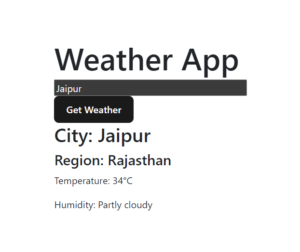Implementing security in Java Full Stack applications is crucial to protect sensitive data, authenticate users, and control access to resources. Here are some key aspects to consider when implementing security in Java Full Stack applications:
- Secure Authentication:
Implement a secure authentication mechanism to verify the identity of users. Use industry-standard protocols such as OAuth 2.0 or OpenID Connect for authentication and authorization. Libraries like Spring Security provide robust authentication features for Java applications. - Password Storage:
Ensure that passwords are properly hashed and stored securely in the database. Use strong cryptographic algorithms such as bcrypt or PBKDF2 to hash passwords. Avoid storing passwords in plain text or using weak hashing algorithms. - Authorization and Access Control:
Implement authorization mechanisms to control access to resources within your application. Define user roles and permissions, and enforce access control rules based on these roles. Use frameworks like Spring Security or Java EE’s declarative security to handle authorization. - Cross-Site Scripting (XSS) Prevention:
Protect your application against cross-site scripting attacks by properly encoding user input and sanitizing user-generated content. Apply input validation and output encoding techniques to mitigate the risk of XSS vulnerabilities. - Cross-Site Request Forgery (CSRF) Protection:
Guard against CSRF attacks by including CSRF tokens in your forms and validating them on the server-side. Frameworks like Spring Security provide built-in CSRF protection mechanisms that can be easily integrated into your Java Full Stack application. - Transport Layer Security (TLS):
Enable HTTPS for secure communication between the client and server. Configure your application server to use TLS/SSL certificates to encrypt network traffic and protect sensitive data from eavesdropping or tampering. - Session Management:
Implement secure session management techniques to ensure the integrity and confidentiality of session data. Use secure session identifiers, enforce session expiration, and protect against session fixation attacks. Frameworks like Spring Session provide features for managing secure sessions in Java applications. - Input Validation and Sanitization:
Validate and sanitize user input to prevent common security vulnerabilities such as SQL injection and command injection attacks. Use parameterized queries, prepared statements, or ORM frameworks like Hibernate to avoid constructing SQL queries using user input directly. - Error Handling and Logging:
Implement proper error handling and logging mechanisms to capture and handle exceptions securely. Avoid exposing sensitive information in error messages and logs. Utilize logging frameworks like Log4j or SLF4J to log relevant security events and monitor application behavior. - Regular Updates and Vulnerability Scans:
Keep your Java Full Stack application and its dependencies up to date with the latest security patches and updates. Regularly perform vulnerability scans and security assessments to identify and mitigate any potential security weaknesses. - Security Testing:
Conduct thorough security testing of your application. Perform penetration testing, vulnerability scanning, and code reviews to identify and address security vulnerabilities. Use tools like OWASP ZAP or Burp Suite to perform security testing and identify common vulnerabilities. - Security Education and Training:
Educate your development team about secure coding practices, security risks, and best practices for secure application development. Stay updated with the latest security trends and incorporate security into your software development lifecycle.
By addressing these aspects, you can implement strong security measures in your Java Full Stack applications, protecting them from common security threats and ensuring the confidentiality, integrity, and availability of your application and its data.



